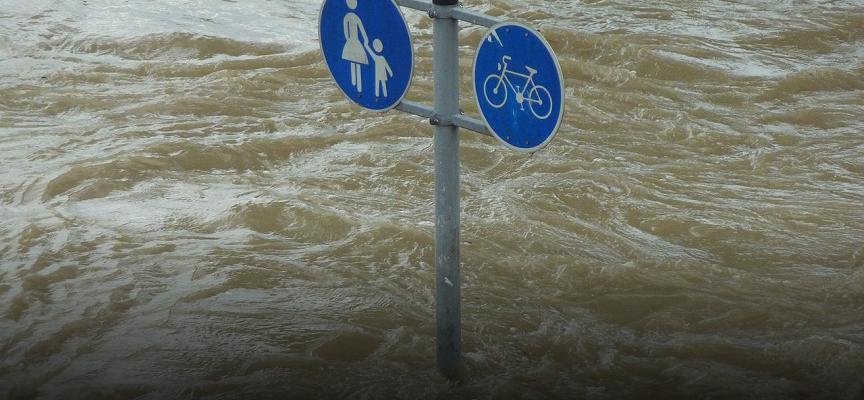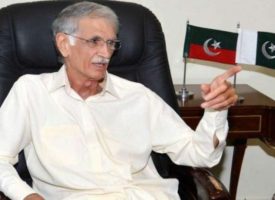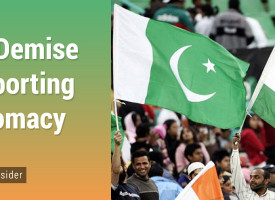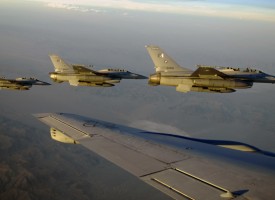Year after year, the Pakistan faces a multitude of natural and man-made disasters. Examples of the former include earthquakes and floods whereas the latter includes fires, critical infrastructure meltdown, etc. Despite the fact that National Disaster Management Authority (NDMA) has an office in the Prime Minister’s Secretariat, it fails to effectively dispense relief efforts, let alone synergize the efforts of its provincial offshoots.
After the deadly October 8, 2005 earthquake that rocked Pakistan, the need for a single, competent authority to respond, rehabilitate and reconstruct damaged areas became an urgent need of the hour. The Government of Pakistan, in realization of this need, introduced the National Disaster Management Ordinance 2007 which effectively became a law in 2010 under the National Disaster Management Act. NDMA acts as a coordination and monitoring agency for relief efforts between and among armed forces, civilian rescue agencies, emergency teams and United Nations.
As mentioned in the opening lines, NDMA defines “disaster” as “a catastrophe or a calamity in an affected area, arising from natural or man-made causes or by accident which results in a substantial loss of life or human suffering or damage to, and destruction of, property;” (Ref: Section 2 (b) in NDMA Act 2010). Whereas “disaster management” has been defined as, “managing the complete disaster spectrum, including (i) preparedness; (ii) response; (iii) recovery and rehabilitation; and (iv) reconstruction” (Ref: Section 2 (c) in NDMA Act 2010).
Uptil now, only the Pakistan Armed Forces, especially the Army, has been found prepared in advance on possible alerts for help. In response and recovery efforts, Army and Navy have played crucial roles, and so has the Air Force to some extent (mostly in aerial supply logistics). As far as post-disaster reconstruction is concerned, the armed forces can only do whatever little they can because of their immediate concerns elsewhere; not that they are not capable of it, but because the country is in a state of war and their foremost priority is the protection of the state from its thousands of internal/external enemies.
In essence, NDMA is basically a coordinating agency with the Prime Minister as the National Coordinator. As such, it does not have any dedicated rescue/relief teams of its own, neither does it have any specialized task force comprising of disaster management operators who can be deployed for work in any given geographical setting at any given time. This makes the NDMA more of the usual bureaucratic setups instead of a truly effective agency for timely assistance.
Reliance for relief operations is on civil, paramilitary and military agencies and/or third party aid teams. Since long, the burden for disaster relief operations has been on the military, having the rightly-trained and capable personnel to respond to such emergencies. As regards paramilitary and other rescue bodies like Rescue 1122, their resources, training and budgets and simply insufficient to deal with these multitude of dangers.
On the other hand, India not only has a fully functioning NDMA, it also has a dedicated National Disaster Response Force (NDRF). According to Section 44-45 of the Disaster Management Act of India 2005, NDRF is a police force which was set up “for the purpose of specialist response to a threatening disaster situation or disaster”. It is subordinate to the NDMA and is headed by a Director General, an Indian Police Service (IPS) officer who wears a uniform equal to a three star Lieutenant General. India has been regularly providing NDRF personnel with specialized trainings in the US, UK, Singapore, Korea, New Zealand, Iran and Switzerland, to name a few. In fact, NDRF’s setup is so large that it is divided into 10 battalions organized on paramilitary lines, each stationed in Uttar Pradesh, Punjab, West Bengal, Assam, Orissa, Tamil Nadu, Maharashtra, Gujarat, Bihar and Andhra Pradesh (effectively covering all of India’s key zones). Personnel who join NDRF are deputed from the Border Security Force (BSF), Central Reserve Police Force (CRPF), Central Industrial Security Force (CISF), Indo-Tibetan Border Police (ITBP) and Sashastra Seema Bal (a sort of central paramilitary force). Each battalion has a strength of approximately 1,149, which means in total the 10 battalions of NDRF comprises of more than 11,490 personnel.
Compare this to the absence of such a specialist force in Pakistan and it is quite obvious why we have so far failed to employ efficient pre-emptive disaster prevention measures. Pakistan, a country which enjoys the blessings of all four seasons and has a diversity of geographical terrain on its soil, needs a dedicated relief operations force similar to what its neighbor India has. For how long will affected persons and NDMA rely on existing, worn out civil agencies and counter terrorism-focused armed forces to deal with disasters?
Way Forward for Pakistan
The following measures are suggested and are being presented to state authorities:
• Immediate establishment of a National Disaster Relief Operations Force (NDROF) with at least 7,000 personnel; merge in existing PDMAs/DDMAs across Pakistan.
• Setting up of a Disaster Alert Fusion Cell in NDMA Headquarters for round-the-clock all-source input from PDMAs, DDMAs and other bodies such as the Met Department, Pakistan Air Force, Space and Upper Atmosphere Research Commission (SUPARCO), etc
• Increase training programs with regional and international countries to exchange best practices.
• Promote academic courses in universities and institutions for Disaster Management.
• Conduct annual training and refresher workshops in schools, businesses, city centres and institutes across Pakistan with a primary focus on less-accessible and oft-affected rural areas.
• Permanent establishment of the proposed NDROF units in high risk areas such as Southern Punjab, interior Sindh, Gilgit-Baltistan.
• Annual deputation of Army, Navy, Air Force, Rangers and Frontier Corps (FC) troops on rotation in the proposed NDROF units to add complimentary manpower while not putting burden of finances and resources on any one particular existing paramilitary/military force.








No comments!
There are no comments yet, but you can be first to comment this article.